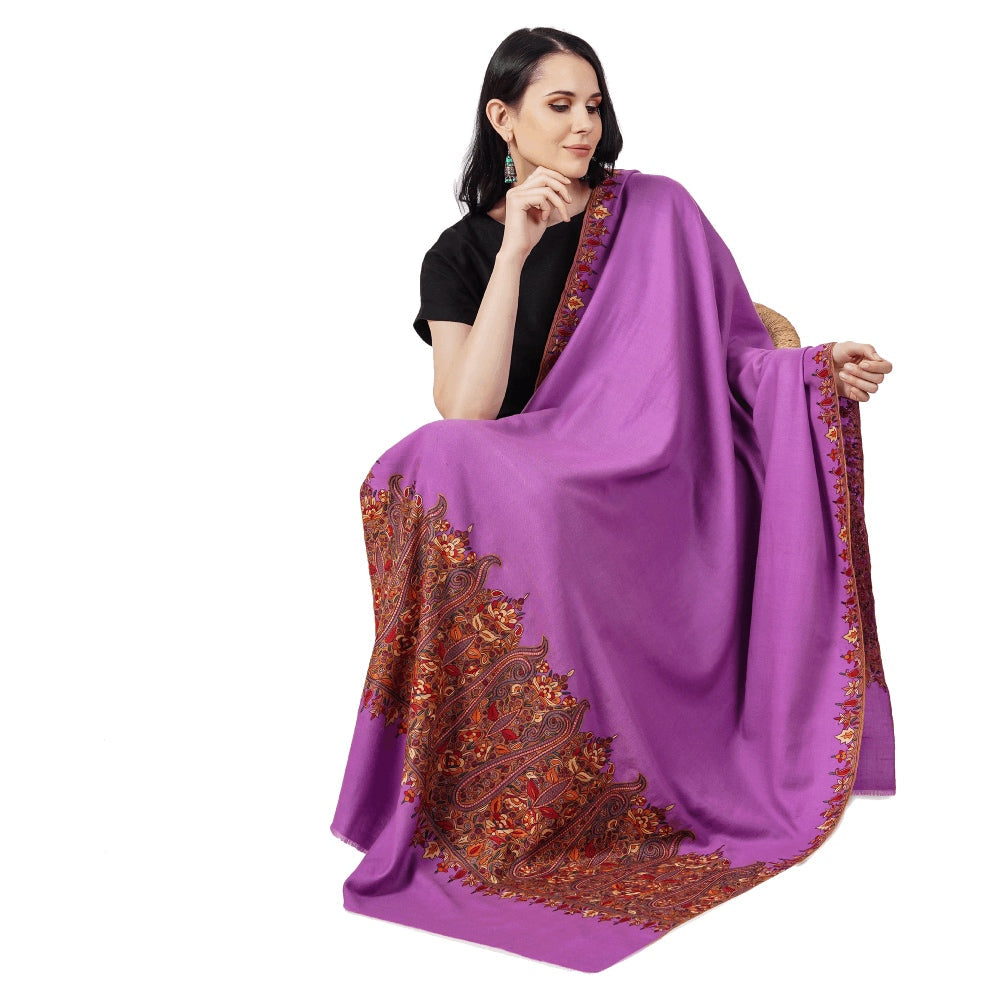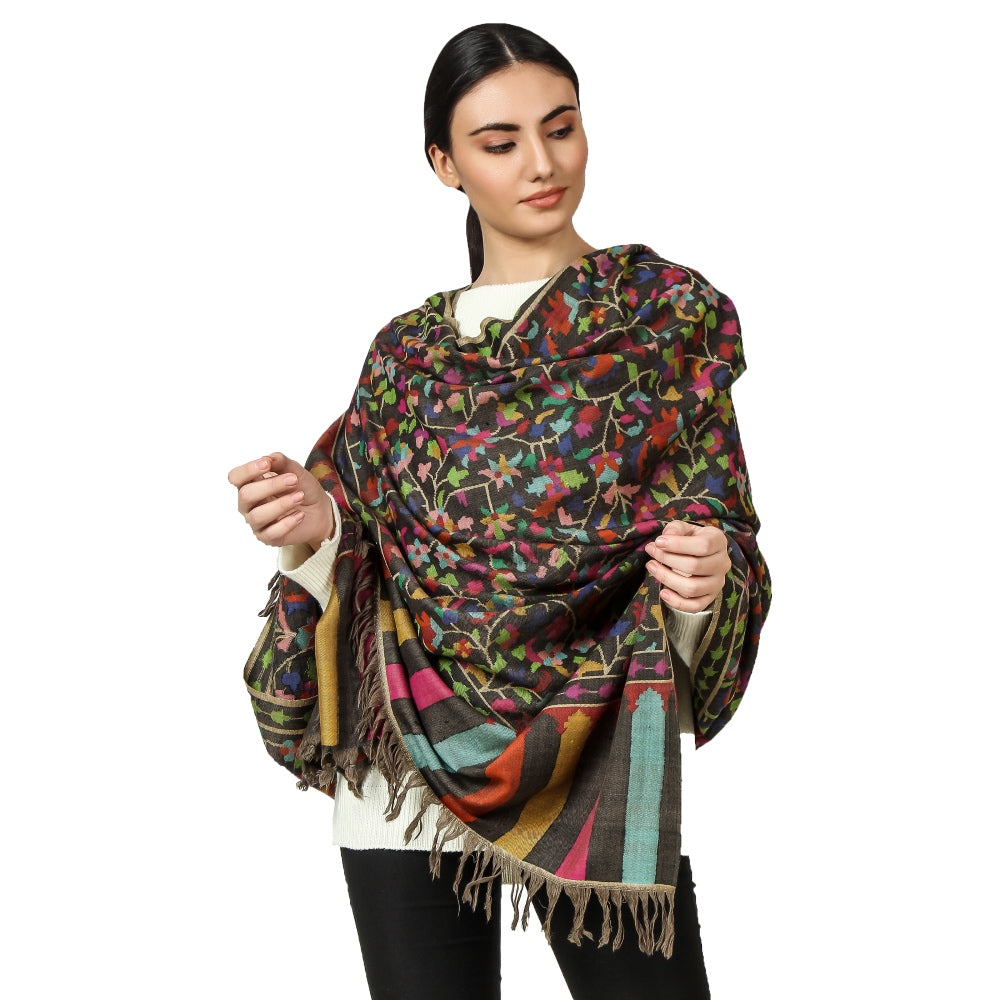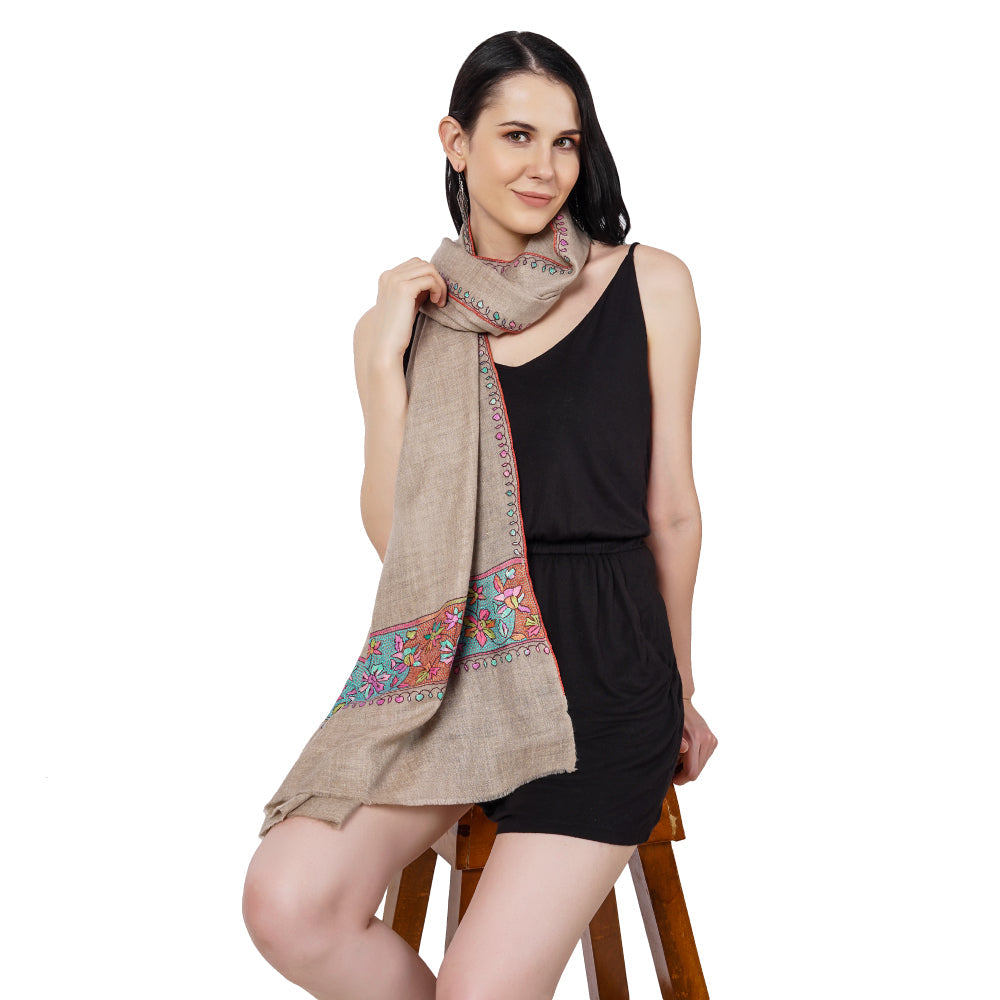
What is the Kani Shawl Made of?
Share
The world of fashion is replete with exquisite and luxurious textiles, and among them, the Kani shawl stands out as a masterpiece of craftsmanship and artistry. These shawls have a rich history and are celebrated for their warmth, intricate designs, and the exceptional materials used in their creation. In this article, we delve deep into the world of Kani shawls, exploring what they are made of and why they are so highly regarded.

The Origins of the Kani Shawl
To understand what Kani shawls are made of, it's essential to start with their origins. Kani shawls originate from Kashmir, a region known for its breathtaking natural beauty and unique textile traditions. The term "Kani" is derived from the Persian word "Kani," meaning "small sticks." This refers to the fine wooden needles that are traditionally used in the making of these shawls.
Pashmina: The Backbone of Kani Shawls
At the heart of every Kani shawl is high-quality Pashmina. Pashmina is the primary material from which Kani shawls are crafted. However, not just any Pashmina will do. The best Kani shawls are made from the fleece of specific breeds of Kashmiri goats, such as the Changthangi or Pashmina goat. The fine undercoat of these goats is known for its softness, warmth, and lightweight properties, making it the ideal choice for crafting luxury shawls.
Pashmina Wool: The Epitome of Luxury

Pashmina wool is often considered the finest material for Kani shawls. Obtained from the underbelly of the Pashmina goat, this wool is incredibly soft, almost as soft as cashmere, and provides unmatched warmth and comfort. Due to its fineness, Pashmina wool is challenging to obtain in large quantities, which adds to the exclusivity and luxury of Kani shawls made from it.
The Art of Kani Weaving
While the wool is the primary material, what truly sets Kani shawls apart is the intricate art of Kani weaving. The Kani weaving technique is labor-intensive, requiring immense skill and patience. Highly skilled artisans use these small wooden needles, or "kanis," to create delicate patterns and motifs. Each Kani shawl is a labor of love, taking months, or even years, to complete.

Natural Dyes: A Kaleidoscope of Colors
The colors used in Kani shawls are as exquisite as the patterns. Traditional Kani shawls are renowned for their use of natural dyes. These dyes are derived from various sources like flowers, bark, and roots. The rich, vibrant colors are an essential part of what makes Kani shawls so visually stunning and culturally significant.
also read:- a detailed blog on the transformation of cashmere into pashmina art
The Weaving Process of Kani Shawls
The weaving of a Kani shawl involves a meticulous process. Skilled artisans follow these steps to create these timeless pieces of art:
-
Design Creation: The design is first created on a graph paper, with each square representing a specific color of thread.
-
Thread Selection: After the design is finalized, artisans carefully select the threads that match the chosen colors. These threads are typically thin, which allows for intricate detailing in the patterns.
-
Kani Weaving: The artisans weave the threads together using the Kani needles. Each square of the design is replicated on the shawl, resulting in the formation of the intricate pattern.
-
Pattern Alignment: Maintaining the alignment and continuity of the pattern is crucial. This is where the exceptional skill and patience of the artisan come into play.
-
Knotting: As one row of weaving is completed, the threads are knotted to secure the pattern. This process is repeated throughout the entire shawl.
-
Finishing: Once the shawl is complete, it undergoes a finishing process that includes washing, blocking, and often, a gentle combing to enhance its softness.
The Cultural Significance of Kani Shawls
Kani shawls are more than just pieces of clothing; they are deeply intertwined with the culture and history of Kashmir. They have been worn by royalty, gifted as a mark of honor, and cherished as family heirlooms. Their intricate designs often tell stories and represent cultural symbols, making each Kani shawl a work of art that carries a piece of Kashmir's rich heritage.
Contemporary Kani Shawls
In recent years, contemporary Kani shawls have evolved to cater to modern fashion sensibilities. While traditional Kani shawls are undoubtedly timeless, designers have incorporated these intricate designs into various clothing items and accessories, allowing more people to experience the beauty and craftsmanship of Kani weaving.
Conclusion
In summary, the Kani shawl is a masterpiece of artistry and craftsmanship, made primarily from the finest wool, often Pashmina, and woven with small wooden needles using intricate patterns and natural dyes. These shawls not only provide warmth and comfort but also serve as a symbol of cultural heritage and artistic excellence. Whether worn as a fashion statement or treasured as a family heirloom, Kani shawls will continue to be celebrated for their beauty and the exceptional materials from which they are made.
If you are looking for a timeless and luxurious accessory that embodies the essence of Kashmir's culture and artistry, a Kani shawl from PASHWRAP is the perfect choice. Explore our collection of Kani shawls to experience the epitome of elegance and craftsmanship




